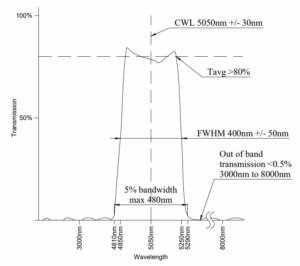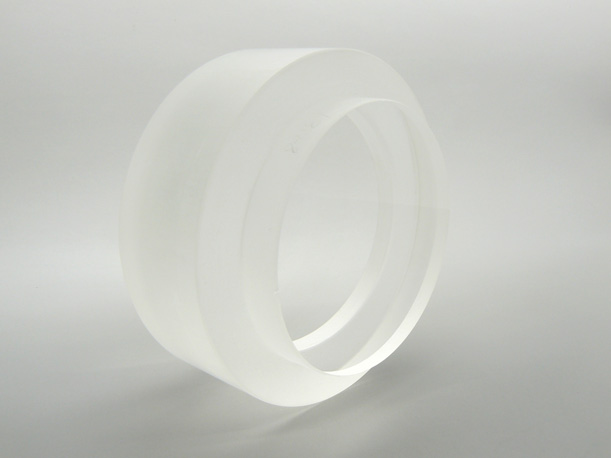IR optics : a complete guide
If you have heard of LIDAR, night vision, thermal camera or spectroscopy, you may understand that infrared applications surround us and are poised to a steady development in the near future. As most of the Photonics applications, infrared applications need optical elements.
In this guide you’ll learn everything you need to know about IR optics.
What are IR optics?
The short answer is optical components that are used in infrared wavelength. They are particular because infrared wavelength are by definition not visible with human eyes. Therefore specific equipment are required to asses them.
Moreover, as infrared range is quite wide, IR optics can be divided in different groups according to their applications.
Some examples of IR optics
Some examples of infrared optics:
- Transparent in the visible infrared optics ( ZnSe, CaF2, MgF2, BaF2, Fused Silica (NIR only), Sapphire (NIR only), optical crown borosilicate (NIR only))
- Non transparent in the visible infrared optics, human eyes cannot see through while they still transmit infrared signals. (material : Teflon, Silicon, Germanium)
- IR filters : limit the infrared transmission to specific infrared areas.
- Infrared mirrors : focusing on reflecting the IR
- Infrared laser optics : optics that focus on a specific wavelength.

Illustration of a IR bandpass filter transmission curve
Infrared optical materials
Comparative chart of IR materials
In below chart you’ll find main IR materials and their respective transmission ranges :
| IR MATERIAL | SPECTRAL RANGE | ASPECT & REMARKS | PRICE INDICATION |
|---|---|---|---|
| (CaF2) CALCIUM FLUORIDE | 180nm to 8.0µm | not colored to light grey. Can be subject to oxidation in highly humid environment. | € |
| (Al302) SAPPHIRE | 170nm to 6.0µm | No color, very stiff material | € |
| CHALCOGENIDE GLASS | 0.8µm to 12µm | Very good IR transmission, moldable material. | € : for big quantities |
| (MgF2) MAGNESIUM FLUORIDE | 200nm-6.0µm | Glass color, better mechanical properties than CaF2. Only available for windows. | €€ |
| (Si) SILICON | 1to10µm (most common material on the 3-5µm range) | metallic color, non-transparent in the visible, transmit only in the IR | €€* |
| (Ge) GERMANIUM | 2 to15µm (most common material on the 2-12µm range) | non visible transparent grey with light metal reflects, good for Far Infrared | €€€ |
| (ZnSe) ZINC SELENIDE | 600nm to 20µm | yellow partially visible transparent, used in CO2 laser applications | €€€€ |
| (ZnS) ZINC SULFIDE | 400nm to 12µm | soft, used for multi-spectral usages | €€€€ |
| (BaF2) BARIUM FLUORIDE | 190nm to 10µm | transparent in the visible, yellow color, good UV transmission | €€€€€ |
*: Silicon raw material is abondant so very cheap, but as it is relatively hard (MOHS 6.5) it is expensive to process
Chalcogenide glass – molded IR optics
Infrared optics are reputed for not being cheap, which limit their application especially for high quantities and complexe shapes (aspherical). Fortunately, chalcogenide glass is a good alternative to more commun materials like germaniun for far infrared applications. Chalcogenide glass, mainly made of S, Se, As, Ge and Te have low softening temperature which enable this material to be molded. While chalcogenide glass itself may be more expensive than Germanium, by molding it, it can be used to get high quantities, affordable aspherical optics.
Chalcogenide glass are used in mass production market like touch-less thermometers.
There are different grades of chalcogenide glass available on the market with optical index ranging from 2.49 to 3.13 (lower than Germanium ones) and densities from 4.4 g/cm3 to 5.3 g/cm3. Dimensions of molded chalcogenide glass lenses can range from 5mm to 25mm diameter.
One other interesting characteristic of chalcogenide glass is it’s low temperature dependency of it’s refractive index (dn/dT), which means that the material optical properties will be more stable with change of temperature.
Definition of infrared
Infrared refers to electromagnetic radiations with wavelength spectrum between 750nm and 1mm. The name cames from the infrared spectrum covers radiations of smaller frequencies than the smallest visible wavelengths view as red by the human eye.
As the range of IR radiation is quite large, further division of the spectrum is done, each corresponding to certain characteristics. Below shows the detail of each IR subdivision.
NIR wavelengths
NIR stands for Near Infrared, by near it refers to it’s closeness to visible spectrum. The NIR spectrum covers 750nm to 1µm. These wavelengths are used in the night vision technology and telecommunications.
SWIR
SWIR stands for Short-Wavelength Infrared, it’s spectrum covers 1µm to 3µm. The SWIR wavelength are used for long distance communications.
MWIR
MWIR stands for Mid-Wavelength Infrared, it’s spectrum covers 3µm to 8µm. Partially covers thermal infrared.
LWIR
LWIR stands for Mid-Wavelength Infrared, it’s spectrum covers 8µm to 14µm. Partially covers thermal infrared.
Far infrared
Far infrared covers the remaining of the IR spectrum from 14µm to 1mm.
Thermal IR
Thermal IR are wavelength used for thermal imaging application, their range may varies according to the applications but commonly covers MWIR & LWIR.
Where to buy IR optics ?
As we have seen above, IR optical components relates to many different kind of components and materials. Most of the precision optics suppliers do provide optical components for infrared application whereas some supplier specialized in IR material manufacturing (Ge, Si, ZnSe, CaF2, MgF2 etc..)
Since China has restricted the export of germanium, it has become more difficult to procure germanium components. Please do not hesitate to contact SINOPTIX. We will take care of applying for the export license and deliver the finished components to you.
Don’t hesitate to contact Sinoptix for request on IR optical component.







